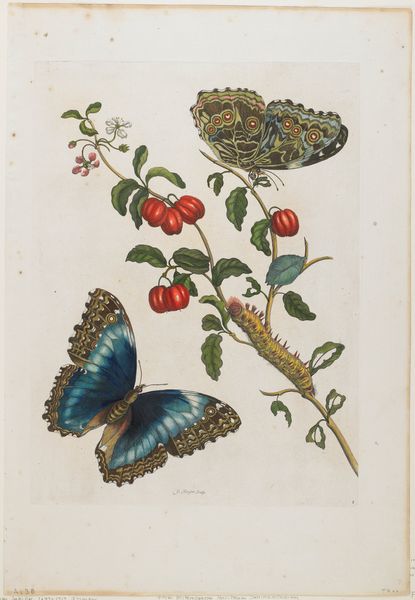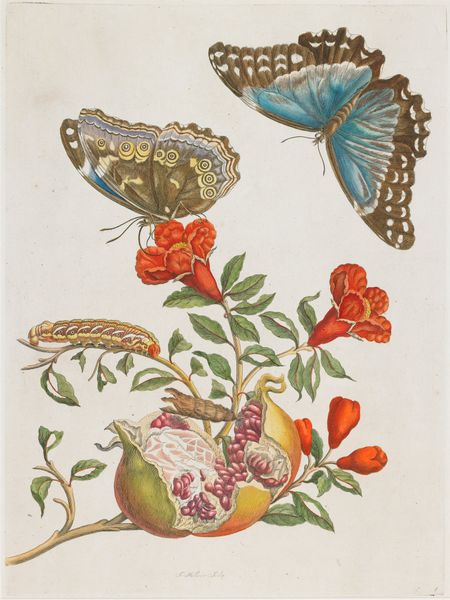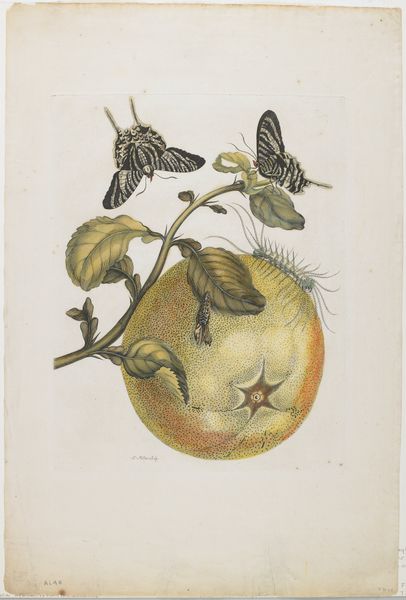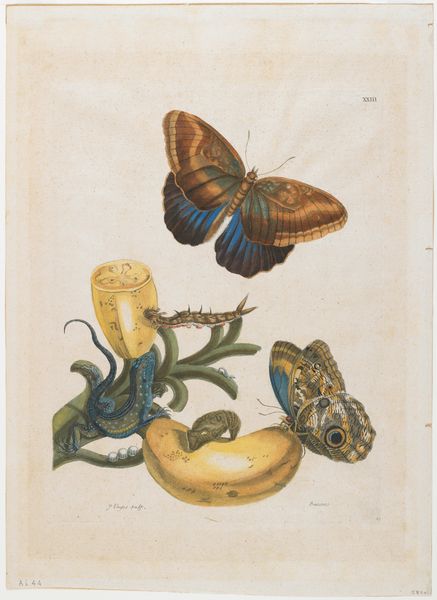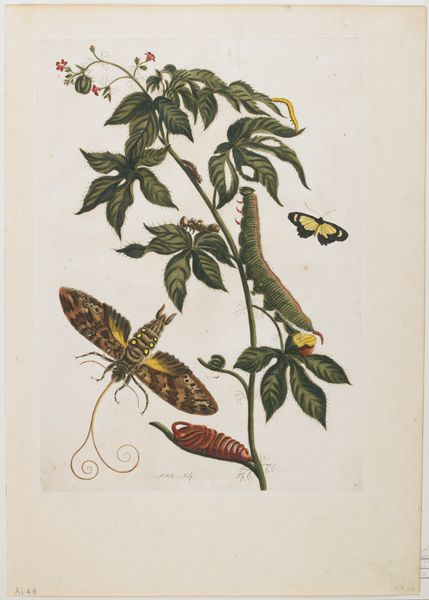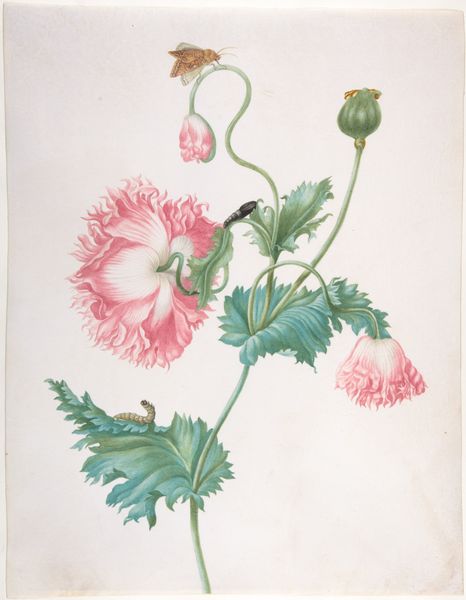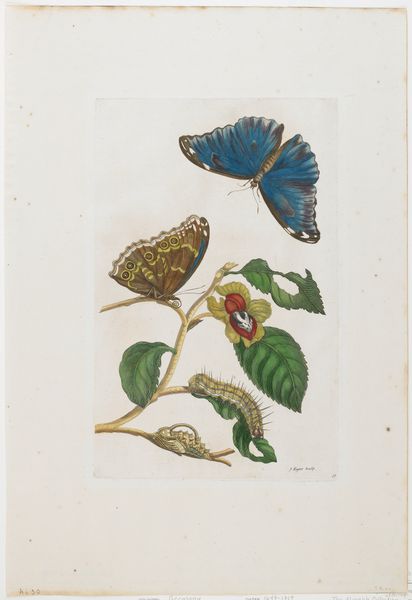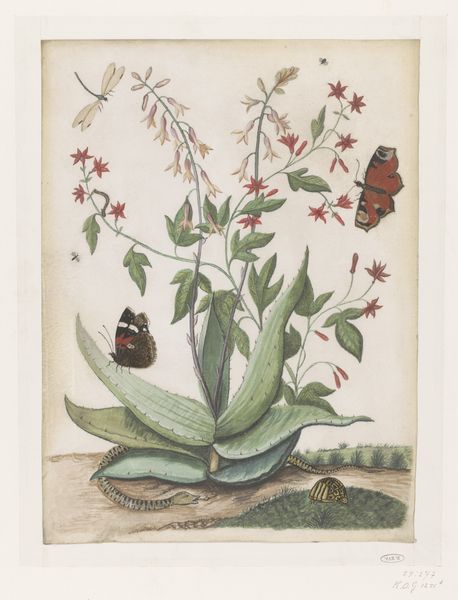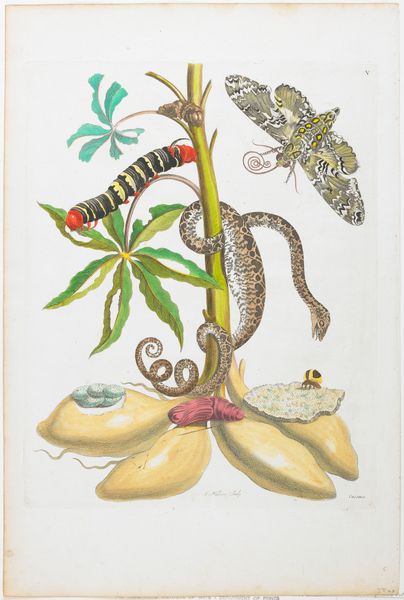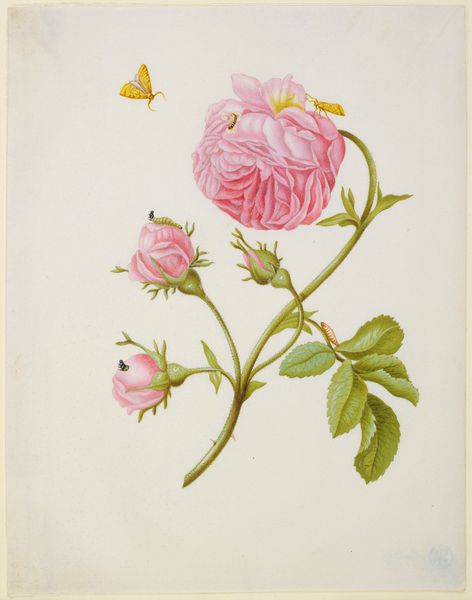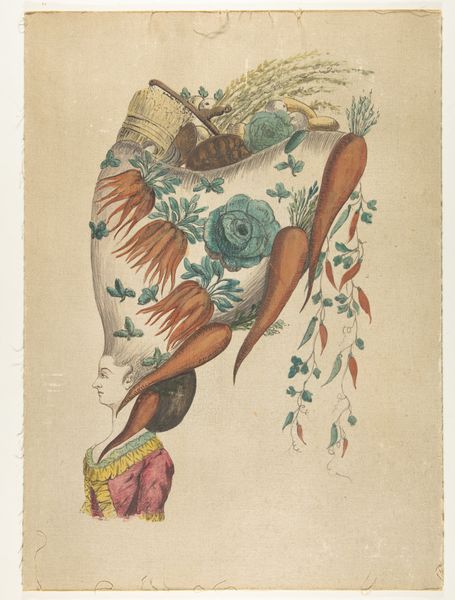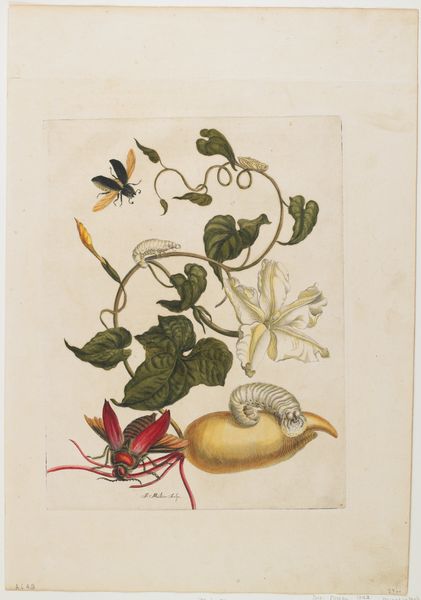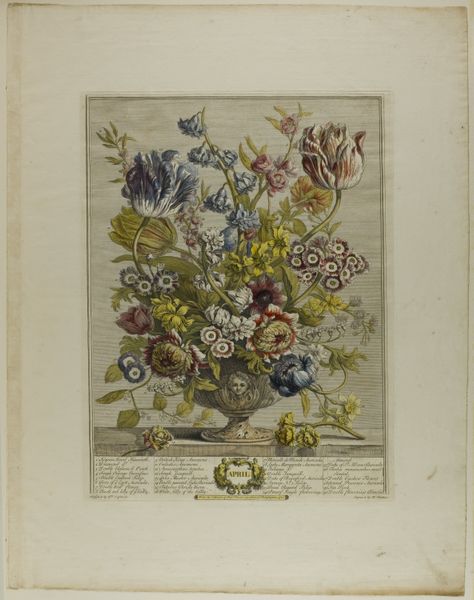
hand-colored-etching, print, engraving
#
hand-colored-etching
# print
#
oil painting
#
watercolour illustration
#
engraving
Dimensions: 15 1/2 x 11 1/4 in. (39.37 x 28.58 cm) (sheet)
Copyright: Public Domain
Curator: It strikes me immediately; there's an almost unsettling level of detail in this print. Is that a caterpillar lurking in the bottom left? Editor: Yes, this hand-colored etching and engraving titled "Inflorescence of Banana," from around 1705, offers an intriguing depiction of the banana plant in its various stages, complete with associated fauna. It is held here at the Minneapolis Institute of Art. Curator: Inflorescence suggests such a vibrant blooming, a surge of life, and yet, the rather precise style of rendering evokes an era of scientific cataloging, wouldn't you agree? The rigid composition gives a feeling of staged objectivity. Editor: Precisely! Prints such as these were vital visual documents in the era of exploration and burgeoning colonialism. Banana plants were encountered across many colonial ventures, of course. Curator: Look at the almost allegorical progression, from the tightly furled blossom with what looks like a pupa to the ripe, bursting fruit at the very top. Does that signal transformation and maybe even exploitability within a colonialist system? It’s all framed very dramatically! Editor: Good eye, I'd agree that's how a contemporary audience would likely perceive it, with the visual rhetoric of colonialism thoroughly embedded in natural illustration. It is interesting how the natural world and European political ambitions were so inextricably entwined. Also the inclusion of that caterpillar introduces questions of destruction/nourishment and ecological impact on behalf of Western interference. Curator: It’s strange to consider something as seemingly benign as a botanical illustration being embroiled in systems of power. Editor: But art never exists in a vacuum, right? "Inflorescence of Banana" allows us to peer into that history and encourages us to rethink how we categorize and interpret even the simplest images. Curator: Absolutely. And it compels me to think critically about the role images play in shaping our understanding of both nature and culture. Thank you.
Comments
minneapolisinstituteofart about 2 years ago
⋮
This bold and colorful banana plant is one of Merian's most famous illustrations. Bananas were introduced to the Caribbean in the early sixteenth century and from there spread to other parts of South America. As few Europeans would have tasted these seedless fruits, she described them in detail in Metamorphosis Insectorum Surinamensium: "It is used like an apple, and has a pleasant flavor like apples…it is good cooked and raw. When unripe they are green, while the ripe fruit is lemon yellow inside and out; they have a thick skin like a lemon."
Join the conversation
Join millions of artists and users on Artera today and experience the ultimate creative platform.
